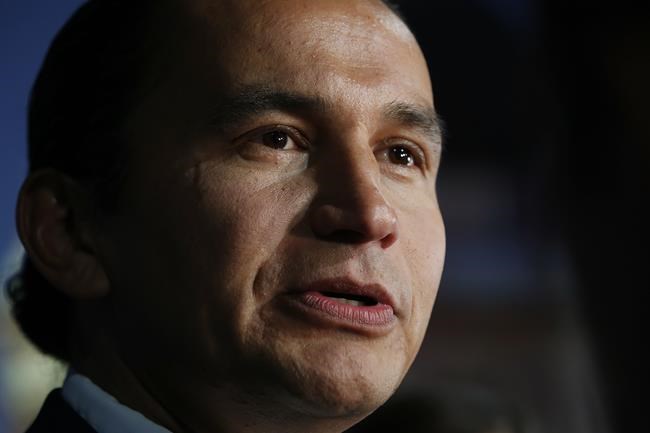ERs likely to remain jammed, WRHA says Respiratory illnesses, flu blamed for spike in numbers; critical-care units overflowing
Read this article for free:
or
Already have an account? Log in here »
To continue reading, please subscribe:
Monthly Digital Subscription
$0 for the first 4 weeks*
- Enjoy unlimited reading on winnipegfreepress.com
- Read the E-Edition, our digital replica newspaper
- Access News Break, our award-winning app
- Play interactive puzzles
*No charge for 4 weeks then price increases to the regular rate of $19.00 plus GST every four weeks. Offer available to new and qualified returning subscribers only. Cancel any time.
Monthly Digital Subscription
$4.75/week*
- Enjoy unlimited reading on winnipegfreepress.com
- Read the E-Edition, our digital replica newspaper
- Access News Break, our award-winning app
- Play interactive puzzles
*Billed as $19 plus GST every four weeks. Cancel any time.
To continue reading, please subscribe:
Add Free Press access to your Brandon Sun subscription for only an additional
$1 for the first 4 weeks*
*Your next subscription payment will increase by $1.00 and you will be charged $16.99 plus GST for four weeks. After four weeks, your payment will increase to $23.99 plus GST every four weeks.
Read unlimited articles for free today:
or
Already have an account? Log in here »
Hey there, time traveller!
This article was published 07/01/2020 (2165 days ago), so information in it may no longer be current.
The new chief executive officer of the Winnipeg Regional Health Authority says patient volumes at the city’s emergency rooms and urgent-care centres could remain high in the coming days.
Vickie Kaminski said numbers at ERs and urgent cares have jumped by as many as 120 in recent days compared to a year ago.
The WRHA said there have been an average of 991 visits daily, in total, to the city’s three ERs and three urgent-care centres since the beginning of the year. That compares to an average of 915 in December and 882 in December 2018.

It has led to overcrowding, forcing people accompanying patients to stand in ER waiting rooms and created much longer-than-usual waits for care.
The situation has been exacerbated by a spike in respiratory illnesses and influenza.
“We’re not meeting our wait-time targets,” Kaminski, who this week succeeded Real Cloutier as WRHA CEO, told a news conference Tuesday.
Meanwhile, city hospitals are also experiencing a spike in the number of patients requiring intensive care, Kaminski said.
“Our critical-care units are full. They’re operating at overflow in a lot of circumstances,” she said.
The Winnipeg health system is also struggling to staff all funded ICU beds. The situation has persisted for months.
“We should right now have 63 ICU beds open across the city. We only have 58 open. We are unable to staff the other five,” she said.
A shortage of specially trained nurses is the primary reason, although other medical personnel — such as respiratory therapists — are also in short supply.
If ICU units are filled to overflowing, patients are placed “where we can look after them,” Kaminski said. That could include a post-anesthetic care unit, which is similarly equipped to an ICU.
With ICU patients transferring to surgery units for care, some surgeries may have to be rescheduled, said Krista Williams, the WRHA’s chief health operations officer.
She quickly added that those rescheduled surgeries would be carried out “in as timely a fashion as possible.”
Williams said one critically ill patient was recently transported to Brandon for care.

“In the 1990s, under Gary Filmon, we had hallway medicine. Now in 2020, under Brian Pallister, we have highway medicine.”
– NDP leader Wab Kinew
The WRHA later clarified in a statement that the patient was not a Winnipeg resident. It said such patient transfers are a well-established practice to address over-capacity issues in health-care systems across the country.
NDP Leader Wab Kinew, however, seized on the patient transfer to bash the Pallister government’s handling of health care.
He said it’s his understanding that such transfers have occurred multiple times, although he provided no evidence to support the assertion.
“In the 1990s, under (Progressive Conservative premier) Gary Filmon, we had hallway medicine. Now in 2020, under Brian Pallister, we have highway medicine,” he quipped.
Kinew also criticized the WRHA and province for blaming the flu season every year for the city’s hospital woes.
He said department and grocery stores are able to ramp up for high seasonal demands, and Winnipeg hospitals should be able to do so, as well.
In a late-day statement, Health Minister Cameron Friesen said over the past two weeks patient volumes at Winnipeg hospitals have been the highest in at least six years.
“This increase, driven largely by high levels of respiratory illness and two different flu strains all spiking at the same time, has prompted surge protocols to be put in place throughout the WRHA,” Friesen said.
“Mr. Kinew is regrettably trying to politicize this unusual public health occurrence,” the minister said. “What he neglected to tell reporters today is these same (patient transfer) protocols existed under the former NDP government and that similar approaches have been widely used in other jurisdictions for decades.”
larry.kusch@freepress.mb.ca

Our newsroom depends on a growing audience of readers to power our journalism. If you are not a paid reader, please consider becoming a subscriber.
Our newsroom depends on its audience of readers to power our journalism. Thank you for your support.








